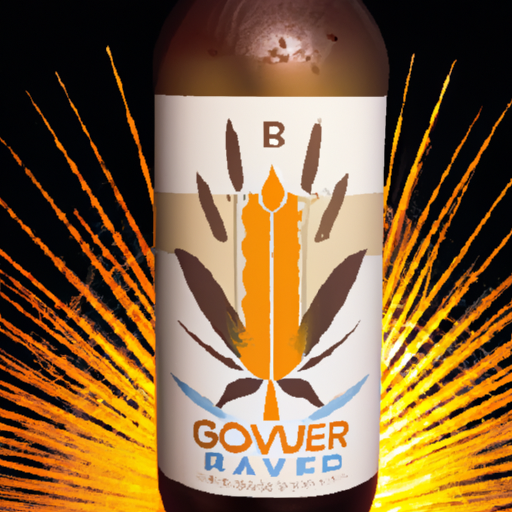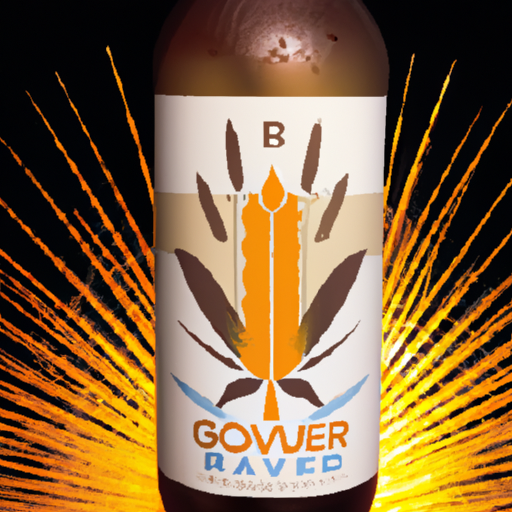Beer Industry Trends
So, you’re curious about the latest happenings in the beer industry, eh? Well, you’ve come to the right place! In this article, we’re going to take a quick look at the current trends shaping the world of beer. From the rise of craft breweries and the popularity of unique flavors to the growing demand for low-alcohol and non-alcoholic options, the beer industry is constantly evolving. So sit back, grab a cold one, and get ready to sip on some fascinating insights into the ever-changing world of beer. Cheers!

Table of Contents
Craft Beer Boom
Craft beer has experienced an unprecedented rise in popularity in recent years, with consumers increasingly seeking out unique and flavorful options beyond traditional mass-produced beers. This surge in demand has given rise to a whole new market segment known as the craft beer industry. Craft beer refers to beers produced by small, independent breweries that focus on quality, flavor, and innovation.
Increasing popularity of craft beer
One of the primary drivers of the craft beer boom is the increasing popularity of craft beer among consumers. As beer enthusiasts become more adventurous in their taste preferences, they are actively seeking out craft beer as a way to explore a wide range of flavors and styles. Craft breweries offer an extensive selection of beer options, from hoppy IPAs to rich stouts, providing a unique and diverse drinking experience.
Growth of microbreweries
The craft beer movement has fueled the growth of microbreweries, which are small-scale breweries that produce limited quantities of beer. Microbreweries often operate on a local or regional scale, allowing them to connect with their community and cater to local tastes. These smaller breweries focus on quality over quantity, using traditional brewing methods and fresh ingredients to create artisanal beers that stand out in a crowded market.
Innovation in craft beer flavors
Craft breweries are known for their experimental approach to beer flavors, constantly pushing the boundaries of traditional brewing techniques. Brewers are increasingly incorporating unique ingredients such as fruits, spices, and even coffee into their beer recipes, resulting in innovative flavor profiles that captivate consumers. With craft beer, consumers have the chance to experience new and exciting taste sensations, expanding their palate and enhancing their drinking pleasure.
Health-Conscious Consumer Shift
In recent years, there has been a noticeable shift in consumer preferences towards healthier options in various industries, and the beer industry is no exception. Health-conscious consumers are increasingly seeking low-calorie and light beer options that align with their lifestyle choices.
Demand for low-calorie and light beers
As people become more conscious of their calorie intake, there has been a growing demand for low-calorie and light beers. These beers are brewed with some of the traditional ingredients but with a reduced carbohydrate and calorie content. This allows consumers to enjoy their favorite beverage without compromising their health and fitness goals.
Rise of non-alcoholic and low-alcohol options
Another trend driven by health-consciousness is the rise of non-alcoholic and low-alcohol beers. These beverages provide an alternative to those who want to enjoy the taste of beer without the effects of alcohol. Non-alcoholic beers have improved significantly in recent years, with brewers focusing on creating flavorful and refreshing options that mimic the taste of their alcoholic counterparts. Additionally, low-alcohol beers, often referred to as session beers, have gained popularity among consumers looking for a more moderate drinking experience.
Sustainability and Environmental Awareness
In addition to the health-conscious shift, consumers are also increasingly concerned about the environmental impact of their purchases. This has prompted breweries to adopt sustainable brewing practices and reduce their carbon footprint.
Focus on sustainable brewing practices
Craft breweries are taking steps to minimize their environmental impact by implementing sustainable brewing practices. This includes efficient water usage, reducing energy consumption, and implementing recycling and waste management strategies. By prioritizing sustainability, breweries are not only reducing their ecological footprint but also appealing to environmentally conscious consumers.
Reduction of carbon footprint
Breweries are actively exploring ways to reduce their carbon footprint throughout the brewing process. This includes utilizing renewable energy sources, optimizing transportation logistics, and implementing energy-saving technologies. By taking these measures, breweries are addressing the environmental concerns associated with beer production and contributing to a more sustainable future.
Use of eco-friendly packaging materials
Another area where breweries are focusing on sustainability is packaging. Many craft breweries are transitioning to eco-friendly packaging materials, such as cans and recycled cardboard, to reduce waste and promote recycling. These efforts align with consumer demands for more environmentally conscious products and contribute to a circular economy.
Technology Advancements
The beer industry is not immune to technological advancements, and breweries are embracing the potential of automation, robotics, and artificial intelligence to improve efficiency and product quality.
Implementation of automation and robotics in beer production
Breweries are increasingly adopting automation and robotics in their production processes. These technologies help streamline the brewing process, increase production capacity, and improve consistency in beer quality. Automating repetitive tasks allows brewers to focus on the creative aspects of beer production, resulting in a more efficient and productive operation.
Development of smart brewing equipment
Smart brewing equipment, integrated with sensors and data analytics, is revolutionizing the beer industry. This advanced technology allows brewers to monitor and control various parameters and optimize production processes to ensure consistent quality. From temperature control during fermentation to precise ingredient measurements, smart brewing equipment enables brewers to create high-quality beers consistently.
Integration of artificial intelligence in quality control
Artificial intelligence (AI) is playing a significant role in quality control in the beer industry. By analyzing data from various stages of the brewing process, AI systems can identify potential issues, predict quality deviations, and offer real-time recommendations for process improvements. This integration of AI technology ensures that breweries consistently deliver beers that meet consumer expectations.
E-commerce and Direct-to-Consumer Sales
The rise of e-commerce has transformed the way consumers purchase beer, with an increasing number of people opting for online beer sales. This shift towards e-commerce has also paved the way for direct-to-consumer sales and beer subscription services.
Increase in online beer sales
The convenience of online shopping has extended to the beer industry, with consumers turning to online platforms to purchase their favorite craft beers. Online beer sales allow consumers to access a wider selection of beers, including rare and limited-edition releases, that may not be available in local stores. This trend has also helped breweries reach a broader customer base beyond their immediate geographical area.
Growth of beer subscription services
Beer subscription services have gained popularity among beer enthusiasts looking for a curated selection of beers delivered directly to their doorstep. These services offer a variety of subscription options, ranging from monthly beer boxes with a mix of different styles to specialized boxes focusing on a specific theme or brewery. Beer subscription services not only introduce consumers to new and exciting beers but also provide a convenient way to explore different breweries and styles.
Direct-to-consumer shipping regulations
With the growth of e-commerce and direct-to-consumer sales, regulations surrounding the shipping of alcoholic beverages have become a topic of discussion. Various countries and regions have different laws governing the shipment of alcohol, often requiring breweries to navigate complex legal requirements. However, as consumer demand for direct-to-consumer shipping continues to rise, regulators are adapting and revisiting these regulations to facilitate the growth of online beer sales.
Global Market Expansion
Craft beer has transcended borders and has found a global audience, leading to the expansion of the craft beer market beyond its traditional strongholds.
Emerging markets for beer consumption
Traditional beer-drinking regions such as the United States, Europe, and Australia have seen a significant craft beer boom. However, emerging markets in Asia, Latin America, and Africa are also embracing craft beer, presenting new opportunities for breweries. As these markets develop a taste for craft beer and witness a growing middle class, breweries are expanding their reach to tap into the potential of these untapped regions.
Increased international trade of craft beers
The globalization of the beer industry has led to increased international trade of craft beers. Breweries are exporting their products to countries where craft beer culture is thriving, allowing consumers around the world to enjoy a diverse range of craft beer offerings. This exchange of beers across borders fosters cultural exchange and creates new opportunities for collaborations and partnerships between breweries.
Expansion of breweries in untapped regions
Craft breweries are not only expanding their reach into new markets but are also establishing themselves in untapped regions. These regions may not have a strong history or culture of beer consumption, but the growing interest in craft beer presents an opportunity for breweries to introduce their products and educate consumers on the nuances of craft beer. This expansion not only boosts the local economies but also enriches the beer culture of these regions.
Changing Consumer Preferences
Consumer preferences in the beer industry have evolved significantly, with a clear shift towards unique and high-quality beer options.
Preference for unique and experimental beer flavors
Consumers are becoming increasingly adventurous when it comes to beer flavors, seeking out unique and experimental options. Craft breweries are catering to this demand by constantly innovating and pushing the boundaries of traditional beer recipes. From fruity and sour beers to barrel-aged and infused creations, the craft beer market offers a wide range of flavor profiles to suit every taste.
Shift towards premium and high-quality beers
Gone are the days when beer was considered a mass-produced, generic beverage. Today, consumers are willing to pay a premium price for high-quality beers that offer a superior taste experience. Craft breweries place a strong emphasis on quality, sourcing the finest ingredients and employing meticulous brewing techniques to create beers that stand out in terms of flavor, aroma, and overall craftsmanship. This shift towards premium beers reflects the changing perception of beer as a sophisticated and artisanal beverage.
Demand for locally-sourced ingredients
Consumers are increasingly favoring beers made with locally-sourced ingredients, which not only support local farmers but also contribute to the uniqueness and authenticity of the beer. Craft breweries are embracing this demand by incorporating local flavors and ingredients into their beer recipes, creating a sense of connection and terroir. By highlighting regional ingredients, breweries showcase the diversity of beer and the rich agricultural heritage of the areas in which they operate.
Influence of Social Media and Online Platforms
Social media and online platforms have had a profound impact on the beer industry, transforming the way breweries brand and market their products.
Impact of social media on beer branding and marketing
Social media has become a powerful tool for breweries to connect with consumers and build their brand presence. Breweries are utilizing platforms such as Instagram, Facebook, and Twitter to showcase their beers, share behind-the-scenes glimpses of the brewing process, and engage with their audience. Through visually appealing content and compelling storytelling, breweries can create an online persona that resonates with consumers and helps build a loyal following.
Online beer rating platforms and communities
Beer rating platforms and online communities have emerged as valuable resources for beer enthusiasts. Platforms such as Untappd and BeerAdvocate allow users to rate and review beers, providing insights into the quality, flavor, and overall experience of a particular beer. These platforms not only help consumers make informed purchasing decisions but also provide breweries with valuable feedback and visibility. Online communities centered around beer bring together like-minded individuals and foster a sense of camaraderie among beer lovers, further fueling the popularity of craft beer.
Virtual beer festivals and tasting events
In the wake of the COVID-19 pandemic, beer festivals and tasting events have pivoted to virtual formats, providing beer lovers with the opportunity to participate from the comfort of their homes. These virtual experiences offer breweries a platform to showcase their products, interact with consumers through live tastings and Q&A sessions, and even facilitate beer deliveries for a shared beer tasting experience. While traditional in-person events may eventually make a comeback, the virtual space has proven to be a valuable tool for breweries to reach a broader audience and create memorable beer experiences.
Regulatory Changes and Challenges
The beer industry operates within a complex regulatory framework, and breweries must navigate various changes and challenges related to alcohol policies, taxation, and new product innovations.
Alcohol policy reforms and regulations
Alcohol policy reforms and regulations can have a significant impact on the beer industry. From licensing requirements to restrictions on alcohol sales and advertising, breweries must closely monitor and adapt to changes in policy. Additionally, regulations regarding alcohol consumption and driving under the influence play a crucial role in promoting responsible drinking and ensuring the safety of consumers.
Taxation and excise duty updates
Taxation and excise duties imposed on alcoholic beverages can significantly affect the cost of production and, consequently, the prices paid by consumers. Breweries must stay updated on changes in tax policies and factor them into their business operations. Changes in tax rates and regulations can impact brewers’ profitability and competition within the industry, making it essential for breweries to understand and comply with tax laws.
Legalization of cannabis-infused beverages
The legalization of cannabis-infused beverages presents both opportunities and challenges for the beer industry. With more regions legalizing the use of cannabis for recreational purposes, breweries have started exploring the incorporation of cannabis ingredients in their products. However, this new frontier brings regulatory complexities and considerations that breweries must navigate. Compliance with cannabis laws and regulations, ensuring proper labeling and packaging, and understanding the potential market for cannabis-infused beverages are some of the challenges breweries face as they venture into this emerging sector.
Diversification of Beer Products
The beer industry is continuously evolving to cater to changing consumer preferences, resulting in the diversification of beer products beyond traditional beer styles.
Rise of hard seltzers and spiked seltzers
Hard seltzers, also known as spiked seltzers, have gained immense popularity in recent years. These low-calorie, flavored alcoholic beverages offer a refreshing and lighter alternative to traditional beers. Breweries have embraced this trend by introducing their own versions of hard seltzers, often incorporating natural fruit flavors. The rise of hard seltzers demonstrates the industry’s ability to adapt to consumer demands and offer innovative products that appeal to a wide range of tastes.
Increasing popularity of beer cocktails
Beer cocktails have emerged as a trend, blending the flavors of beer with spirits, mixers, and other ingredients to create unique and complex beverage experiences. Mixologists and brewers alike are experimenting with beer-based cocktails, combining different beer styles with spirits, fruit juices, and syrups to create refreshing and inventive libations. Beer cocktails offer a creative twist to traditional beer offerings and provide consumers with an opportunity to explore new flavor combinations.
Innovation in alcoholic kombucha and beer hybrids
Another area of diversification in the beer industry is the development of alcoholic kombucha and beer hybrids. Kombucha, a fermented tea beverage known for its probiotic properties, has gained popularity as a health-conscious alternative to traditional alcoholic beverages. Breweries have started incorporating kombucha into their beer recipes, combining the unique flavors and health benefits of both beverages. These beer-kombucha hybrids offer consumers a refreshing and unique drinking experience, blurring the lines between traditional beer and other fermented beverages.
In conclusion, the beer industry is undergoing significant transformations driven by consumer preferences, technological advancements, and shifts towards sustainability and health-consciousness. Craft beer continues to rise in popularity, offering consumers a diverse range of flavors and styles. Meanwhile, breweries are embracing technology to improve efficiency and quality control, while also exploring e-commerce and direct-to-consumer sales. The global market for craft beer is expanding, with emerging markets and increased international trade contributing to its growth. Consumer preferences are shifting towards unique and high-quality beers, supported by the influence of social media and online platforms. However, the industry also faces various regulatory changes and challenges, including alcohol policies, taxation, and the legalization of cannabis-infused beverages. Amidst these changes, beer products are diversifying with the rise of hard seltzers, beer cocktails, and alcoholic kombucha and beer hybrids. As the beer industry continues to evolve, it is essential for breweries to stay adaptable, innovative, and responsive to consumer demands.






